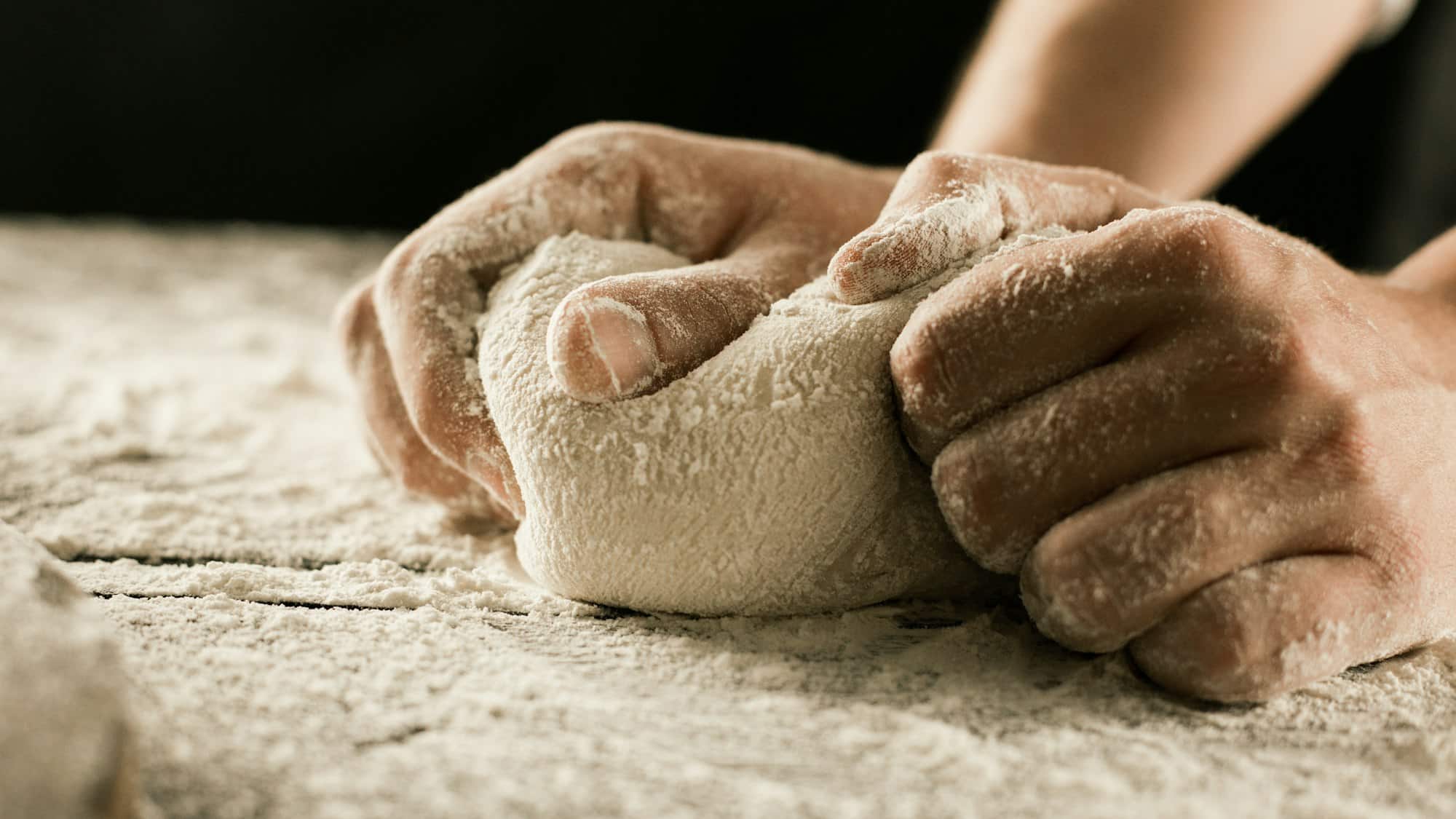Can Artisanal Bread-Making Reduce the Glycemic Index in Diabetic Diets?

Surely you’ve noticed the rising trend of artisanal bread-making, with sourdough leading the pack in popularity. But did you know that this isn’t just a culinary fad? It’s actually a return to traditional methods of bread-making, which can have significant benefits for your health. Today, we’ll delve into the various aspects of bread and its effects on health, particularly for those with diabetes.
The Science Behind Bread
Before we venture into the specifics let’s comprehend the science behind bread and its impact on our health. Bread is a staple food in many diets worldwide, but not all breads are created equal. The type of grain, the process of bread-making, and the presence of other ingredients can significantly influence its nutritional profile. This is particularly important for individuals with diabetes, who need to carefully manage their blood sugar levels.
A découvrir également : Can Genetic Counseling Help Early Detection of Inherited Heart Conditions?
Understanding Glycemic Index
The Glycemic Index (GI) is a rating system for foods containing carbohydrates. It shows how quickly each food affects your blood sugar level when that food is eaten on its own. Foods with a high GI cause a rapid rise in blood glucose levels, while foods with a low GI result in a slower, more sustained increase in blood glucose. Therefore, consuming foods with a low GI can help manage diabetes by preventing sudden spikes in blood sugar levels.
In general, whole grain breads tend to have a lower GI than white bread. This is due to the higher fiber content in whole grain bread, which slows down the digestion process and results in a more gradual release of glucose into the bloodstream.
A lire en complément : BloSkin: the innovative lifting mask for double chins
Bread and Diabetes
Understanding the relationship between bread and diabetes is crucial. White bread, made from refined wheat flour, has a high GI and can lead to a rapid rise in blood sugar levels. This is not ideal for individuals with diabetes, who need to maintain stable blood sugar levels.
On the other hand, breads made from whole grains, such as whole wheat or rye, tend to have a lower GI. These breads contain more fiber, which slows down the digestion process and leads to a slower release of glucose into the bloodstream.
Some research has even suggested that consuming whole grain breads can reduce the risk of type 2 diabetes. However, it’s important to note that the overall quality of your diet and lifestyle factors also play a crucial role in diabetes management and prevention.
The Art of Artisanal Bread-Making
Artisanal bread-making is a traditional method of bread production that relies on natural fermentation processes. This results in breads with unique flavors, textures, and nutritional profiles, which differ significantly from commercially produced breads.
Sourdough Bread
Sourdough bread is a type of bread made by the fermentation of dough using naturally occurring lactobacilli and yeast. This process gives sourdough its characteristic tangy flavor.
But here’s the exciting part: sourdough bread has a significantly lower GI than many other types of bread. This is due to the lactic acid produced during the fermentation process, which can modify the structure of the bread and reduce its glycemic response.
The Process of Bread-Making
The way bread is made can greatly affect its GI. Industrial bread-making processes often involve the use of additives and a quick fermentation process, which can result in breads with a high GI.
On the contrary, artisanal bread-making methods, like those used in making sourdough, involve a slow fermentation process. This allows for complex biochemical reactions to take place, which can result in breads with a lower GI. Furthermore, the use of whole grain flour instead of refined white flour can further lower the GI of the bread.
The Verdict: Can Making Your Own Bread Help?
Making your own bread can indeed help you manage your diabetes. Not only does it give you control over the ingredients used, but it also allows you to choose bread-making methods that can reduce the GI of your bread.
The slow fermentation process used in artisanal bread-making, such as for sourdough, allows for the creation of breads with a lower GI. Moreover, making your own bread allows you to use whole grain flours instead of refined white flour, further reducing the GI of your bread.
However, it’s critical to remember that bread alone is not the key to managing diabetes. Regardless of whether you make your own bread or not, maintaining a balanced diet, regular physical activity, and a healthy lifestyle are essential for controlling diabetes.
Take the journey towards healthier bread choices, and consider getting your hands in the dough of artisanal bread-making. It could be a game-changer for your diabetes management.
But, as with all things health-related, it’s best to consult with a medical professional or a registered dietitian before making significant changes to your diet or lifestyle. They can provide personalized advice based on your specific health condition and needs.
The Role of Further Research
While the existing research presents a promising outlook on the potential benefits of artisanal bread-making in managing diabetes, more studies are needed to solidify these claims. Current evidence is based on small-scale studies and more larger-scale investigations are required to draw more definitive conclusions.
It’s also important to consider other factors such as individual’s overall diet, physical activity levels, and genetics when interpreting the effects of bread on blood glucose levels. What works for one individual may not work for another, highlighting the need for personalized nutrition advice.
Let’s remember that research is a continuous process and scholars are constantly uncovering new insights into the complex relationship between food and health. We can look forward to future advancements that will further enrich our understanding of the link between artisanal bread-making and diabetes management.
Exploring Alternatives: Gluten-Free and Low-Carb Breads
Over the past few years, with the increasing prevalence of dietary restrictions and health considerations, there has been a surge in the popularity of gluten-free and low-carb bread options. For people with diabetes, these alternative bread options can be particularly beneficial.
Let’s focus on gluten-free bread first. Gluten is a type of protein found in wheat, barley, and rye. While it doesn’t directly impact blood sugar levels, some research suggests that a gluten-free diet can improve glycemic control in individuals with type 1 diabetes.
Gluten-free bread is made using a variety of flours including rice, almond, or potato flour. These types of bread can also be produced through artisanal methods. However, it’s important to consider that gluten-free doesn’t necessarily mean low GI or healthy. Some gluten-free breads can have a higher GI than regular wheat bread, so it’s crucial to check the nutritional profile before consumption.
On the other hand, low-carb breads can be a good choice for people with diabetes. The low-carb content means a lower GI, which can help control blood sugar spikes. These breads are often made with almond or coconut flour, and the use of high-fiber ingredients can further reduce the GI.
But remember, regardless of your choice of bread, maintaining a balanced diet and a healthy lifestyle is key in managing diabetes.
The Power of Sourdough Fermentation
The magic of sourdough bread lies in its fermentation process. By exploring the science behind it, we can understand how this traditional bread-making technique can benefit individuals with diabetes.
In the sourdough fermentation process, the dough is left to ferment naturally with lactobacilli and wild yeasts. This process produces lactic acid, which not only gives sourdough its distinctive tangy flavor but also has significant health benefits.
The lactic acid in sourdough bread has been shown to lower the bread’s glycemic index. This is because it interferes with the starch-to-glucose conversion process during digestion, leading to a slower glucose response. This means that consuming sourdough bread could result in a more gradual rise in blood sugar levels compared to consuming regular white bread.
Moreover, this fermentation process also pre-digests the wheat in the bread, which can reduce gluten levels. This can be beneficial for individuals who are sensitive to gluten.
However, it’s important to note that while sourdough bread has potential health benefits, its impact on blood glucose levels can vary between individuals. Therefore, it’s always best to monitor your blood sugar levels regularly to observe how different types of bread affect you.
Conclusion: The Breadth of Bread Choices
The world of bread is diverse, and the choice of bread can have a significant impact on our overall health, especially for those managing diabetes. From the type of grain to the method of preparation, these factors can influence the glycemic index and, consequently, blood sugar levels.
Artisanal bread-making, particularly sourdough fermentation, presents promising potential for lower-GI bread options. This, combined with the use of whole grain or alternative flours, can offer healthier bread choices for individuals with diabetes.
However, as we’ve emphasized throughout this article, bread alone is not the answer to diabetes management. A balanced diet, regular physical activity, and a healthy lifestyle are vital for effective diabetes control.
To those open to experimentation, consider delving into the art of artisanal bread-making. The act itself can be therapeutic, and the end result could be a healthier addition to your diet. However, do remember to consult with a medical professional or a registered dietitian before making significant dietary changes.
As we look forward to more research from the likes of Google Scholar and Crossref Google, we anticipate a deeper understanding of the relationships between food, health, and disease. Let’s continue to celebrate the diversity of bread, its cultural significance, and its potential for health benefits.
